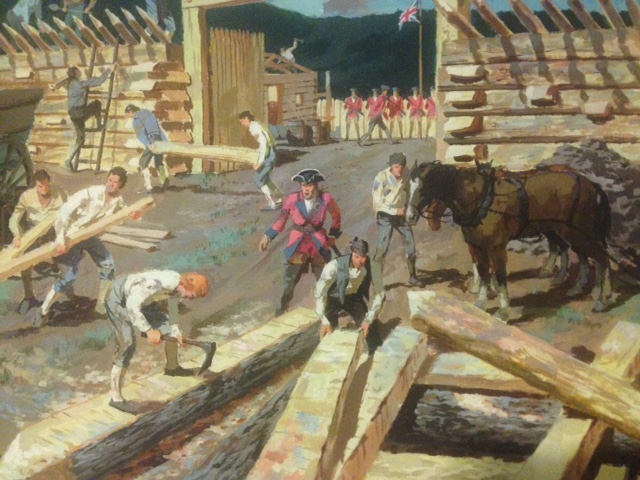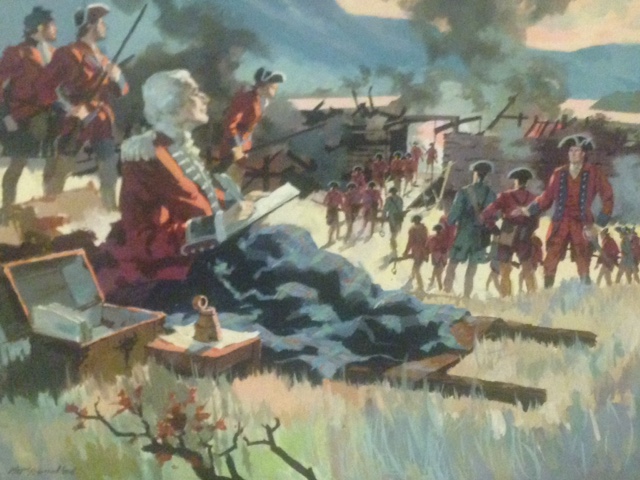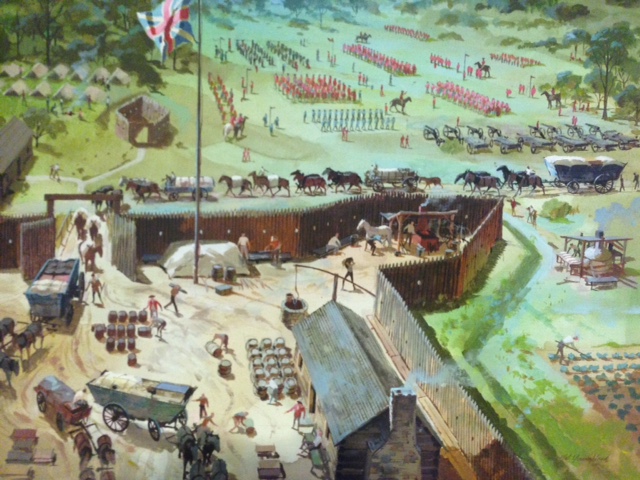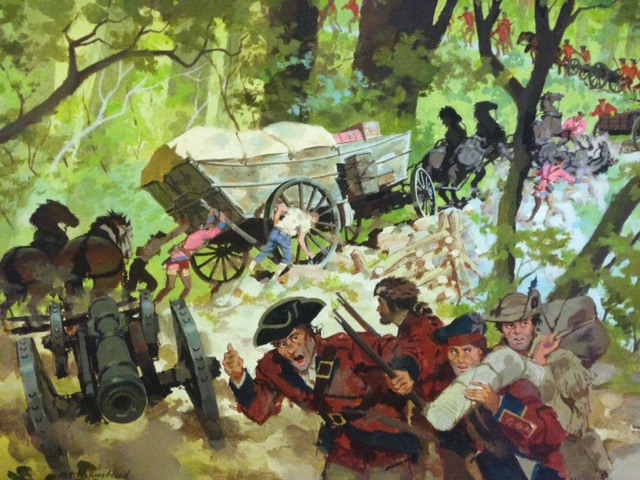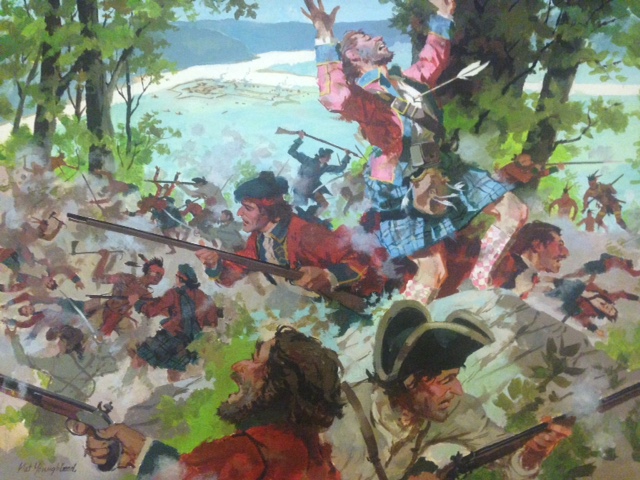Visit the Fort Pitt Museum’s Nat Youngblood’s Pittsburgh exhibit, which explores the life and legacy of this prolific 20th century Pittsburgh artist.
In addition to maps, scale models, life-like museum figures, and artifacts such as tools and weapons, artwork at the Fort Pitt Museum helps tell the story of Fort Pitt and the Point in the 18th century.
When looking at an item in the collection, it is important to consider a few fundamentals, including its medium, its origin, and how the museum acquired it. Some items have a rather simple history, and for others, it’s more complicated.
Let’s take a look at a series of paintings, titled “The Forbes Expedition,” by the late local artist Nat Youngblood. Local residents may be familiar with Youngblood’s work from the covers of the Sunday Roto magazine during his 30-year tenure as art director of The Pittsburgh Press.
Medium: Oil on canvas and wood panel; five paintings, each measuring 17.5″ by 23.5″
Origin: Commissioned by the architectural firm Stotz, Hess & MacLachlan.
When Youngblood completed the series in 1968, architect Charles Morse Stotz, who spearheaded the development and design of the Fort Pitt Museum and Point State Park, incorporated transparencies of the paintings into an original exhibit at the museum. The architectural firm then placed the paintings into storage for years to come.
How the Fort Pitt Museum acquired the series:
Over 30 years later, Rob MacLachlan, whose father was part of the firm and had acquired the paintings, donated the series to the Allegheny Land Trust in an effort to raise funds for the purchase and restoration of 80 acres of land known as Wingfield Pines. The Mellon Financial Corporation purchased the series from the Allegheny Land Trust and subsequently donated the paintings to the Fort Pitt Museum in 2002. They are currently displayed on the first floor. Below are the final two in the series.
Although Stotz, as exhibit designer and commissioner, intended for Youngblood’s paintings to serve merely as visual learning aids and did not publicly display the originals when the museum opened in 1969, it turns out that the artwork holds an interesting history of its own. Its history includes, but is not limited to: being stored safely (and publicly unseen) for years, contributing to regional land stewardship, and eventually hanging on the walls of the museum for which it was produced.
Uncovering the artwork’s history can be just as fascinating as understanding the larger scope of the history portrayed within it, which, in this case, refers to the British expedition led by General John Forbes that captured the Point in 1758. While historians today will point out that some details of the painting aren’t historically accurate, “the painting is a product of its time,” as Fort Pitt Museum Exhibit Specialist Mike Burke said, and it is part of history, too.
Additional artworks are on display at the Fort Pitt Museum: mosaics and a bronze sculpture by Harry Jackson, a watercolor painting by Richard Schlecht, and woven wampum by historical reproduction artist Duane Schreckengost.
Jaclyn Sternick is a customer service associate at the Fort Pitt Museum.
